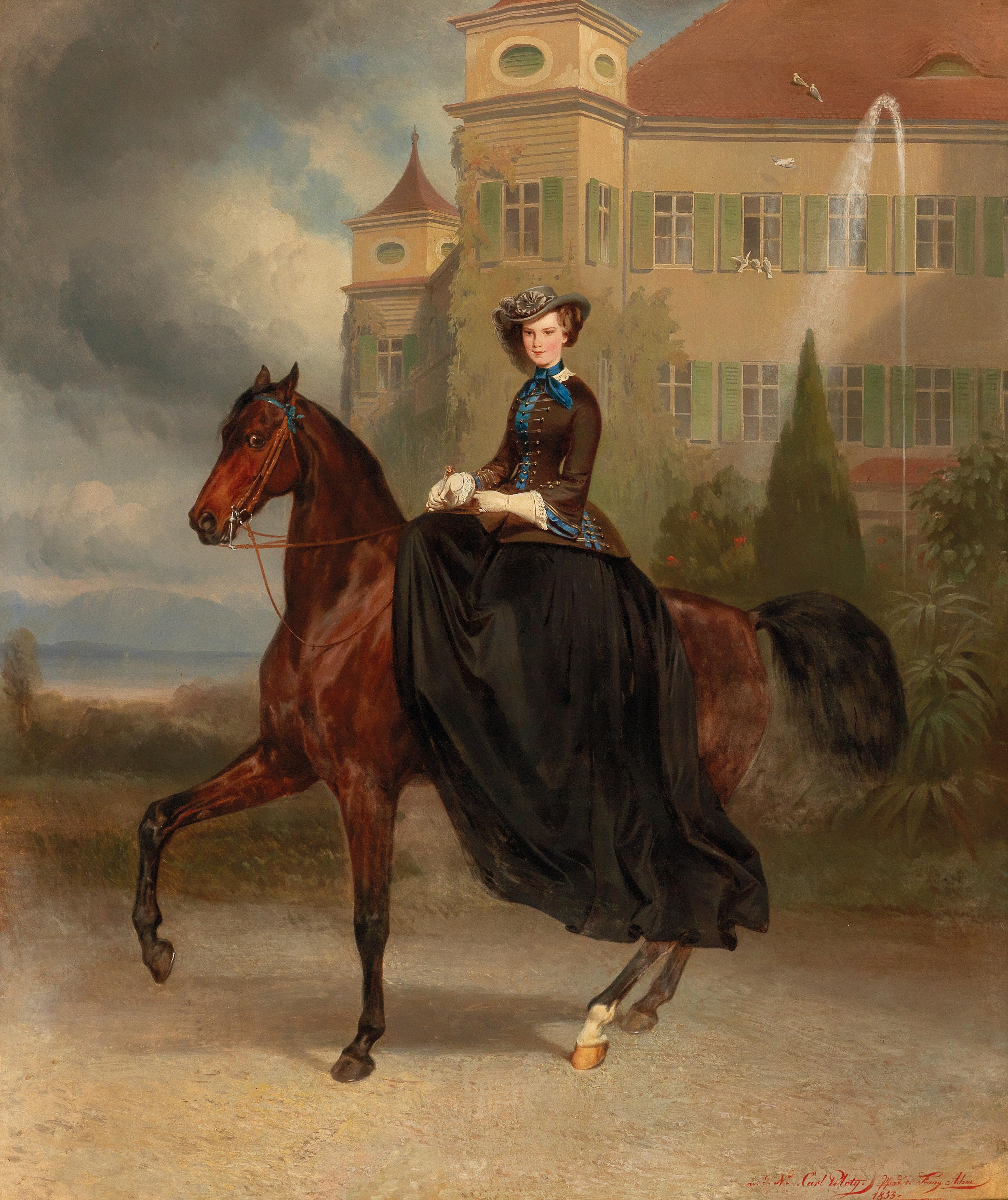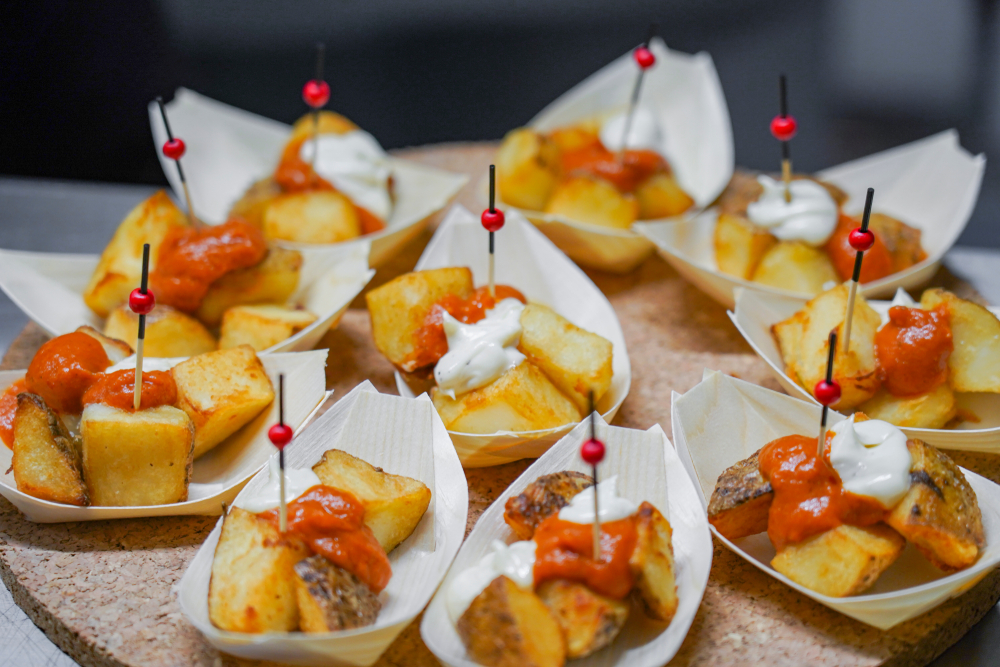With each room decadently draped in imperial opulence, Schönbrunn Palace offers a gilded window into these stunning royal residences. As one of the top tourist destinations in Austria and a UNESCO World Heritage site, the palace is one of Austria’s most significant cultural institutions.
Let’s take a deep dive into the history of this incredible imperial palace.
History and Architecture
The property’s origins, initially called Katterburg, began around the 14th century. In 1569, ownership was transferred to the Hapsburgs through Maximilian II. According to historical documents and title deeds, the property included a house, stable, water mill, garden, and orchard. Maximilian set his sights on using the property as a game park for breeding native game and fowl.
Following Maximilian II’s death in 1576, the estate's ownership changed hands several times. Most owners, including Rudolph II and Emperor Ferdinand II used the property for hunting. Ferdinand II’s widow, Eleonora Von Gonzaga, decided to transform the estate into an architecturally stunning setting for her social life. She renamed the estate Schönbrunn (which translates to “beautiful spring”). After a tumultuous period during the Turkish siege of Vienna in 1683, the palace underwent significant renovations and additions.
Leopold I commissioned an opulent hunting lodge, and construction was completed in 1700, but Schönbrunn Palace we know today only came to fruition under Maria Theresa, the daughter of Emperor Charles IV, when she took possession in 1728. Her vision and grand plans transformed the palace from a hunting lodge into the majestic and lavish estate visited today by millions of people every year.
The palace is widely considered Vienna’s epicenter of Baroque architecture. The palace embodies the Baroque style of symmetry, especially in the use of the building’s carefully placed windows. It boasts an unending richness in decoration, wall decorations, and gilded accents. Maria Theresa also embraced a Baroque lifestyle, hosting luxurious dance balls, horse parades, and concerts featuring famous composers like Wolfgang Amadeus Mozart.
One of the best ways to see Schönbrunn Palace is on our guided tour as your local historian will help you navigate the labyrinth of residential and ceremonial rooms. During your time together, you’ll look at ancient artwork and painstakingly preserved interiors, sparking discussions of the progression of the Habsburg Monarchy and its persisting historical importance for Europe.
Schönbrunn Palace Gardens
The Schönbrunn Palace parks have been open to the public since 1779, and they are a lush extension of the palace’s gorgeous interior. Some of the earliest garden plans date back to 1695. Garden designer Jean Trehet imagined the central parterre with a pool lined with manicured trees and shrubs. Baroque gardens are known for their roomy avenues, and the plans likely included a maze and an orange garden.
Various owners made their mark on the gardens, like the Dutch Botanical Garden built by Emperor Franz Stephan in 1753. Under the eye of Maria Theresa, sculptor Johann Wilhelm Beyer brought to life one of the palace’s most arresting masterpieces, the Neptune Fountain. Hetzendorf von Hohenberg’s design includes Neptune holding a trident, flanked by Triton holding conch shells. The fountain is a magnificent symbol of the Hapsburgs’ power and reign in Austria.

The gardens also boast an Obelisk Fountain, thought to serve as another tribute to the Hapsburgs. The obelisk stretches far into the sky, resting upon sculptures of turtles. The grotto underneath the fountain includes statues of river gods and a pool.
In a departure from the more metaphorical elements of the gardens, the Gloriette is a military-themed collection of arches and columns. One of the best views of Schönbrunn Palace is from the top of the Gloriette – but you’ll need a ticket to get there. The terrace is typically open from early April to early November.
Royal Residences at Schönbrunn Palace
There’s no greater evidence of the palace’s unbridled opulence than in the royal residences.
Maria Theresa embarked on an incredible journey to create a feast for the eyes — with room after room decorated to the hilt and adorned with stunning decor and artifacts. In the mid-1700s, the Great Gallery underwent renovations, including a vaulted ceiling and stucco marble finishes. While the Great Gallery and Small Gallery were initially separated, the doors were removed to create an ample space complemented by frescoed ceilings and stucco work completed in the Rococo style.
Between 1769 and 1777, Maria Theresa commissioned landscape murals by Johann Wenzel Bergl in three multi-room suites on the ground floor. She preferred the rooms facing the gardens, a respite from the summer heat, and her two children occupied the remaining apartments. These three apartments, the Bergl Rooms, are highly regarded for the beautiful landscape murals covering the walls.
Habsburg Dynasty and Empress Sisi
Schönbrunn Palace is an enduring monument to the Hapsburg dynasty’s reign and continued influence in Austria. Numerous Hapsburg families summered at the estate, which was undoubtedly the site of influential political and cultural conversations.
Emperor Franz Joseph I was born at Schönbrunn Palace in 1830 and spent his childhood and early years there. When he married Elizabeth (nicknamed “Sisi”), they spent a significant amount of time at the palace. Empress Sisi enjoyed countless summers amongst the palace’s decadent gardens and impressive interiors.
You can visit the Sisi Museum to see over 300 of Sisi’s personal objects, selections of her wardrobe, and get an inside look at what life was like for the Hapsburgs. Empress Sisi is one of history’s most intriguing figures – often frowned upon for her independent streak. Her free-spirited energy felt at odds with the formality of the royal court. She created her own haven at Schönbrunn Palace by cultivating a unique setting for her imperial apartments that blended Renaissance, Gothic, and Baroque styles.
Tips for Visiting Schönbrunn Palace

The palace was named a UNESCO World Heritage site in 1996, cementing its place in Austria’s history. Millions of visitors flock to the palace every year, thrilled to walk amongst the halls that hosted emperors, composers, artists, and world leaders.
Because of the palace’s popularity, we recommend buying tickets in advance. Adult ticket prices range from €20,00 - €24,00, and child tickets range from €13,00 - €17,00. Children under six receive free admission.
When you purchase your tickets, you’ll select a date and time. Please keep in mind that these are binding – if you arrive outside your selected time, your ticket will not be valid.
Frequently Asked Questions About Schönbrunn Palace
We gathered some common questions about Schönbrunn Palace and asked our experts to answer them. Check out their insights here:
Is it worth visiting Schönbrunn Palace?
That’s up to you and your preferred activities for your trip – but we say absolutely! This rare look inside royal residences offers history, culture, architecture, intrigue, and much more. As one of Austria’s top destinations, it’s a must-see.
How much time do you need in Schönbrunn Palace?
Plan to spend 2-4 hours at Schönbrunn Palace to truly experience everything the estate offers.
Our guided tour of Schönbrunn Palace lasts 2.5 hours and is led by a local historian, which is a great way to maximize your time amongst the gilded rooms and ornate furnishings.
What does Schönbrunn mean in English?
Schönbrunn means “beautiful spring” in English. The estate garnered this name because of the artisanal spring on the property originally used by the court.
What is Mozart's connection to Schönbrunn Palace?
Mozart’s connection to the palace began at a young age – he performed for Maria Theresa when he was six. Historical records show that Mozart and his sister Nannerl performed in the Mirror Room for the empress and her court on October 13, 1762. Mozart is thought to have played the violin and harpsichord, impressing the empress and her guests with his otherworldly talent.
That initial performance sparked Mozart’s reputation as a musical prodigy. It also planted the seed of his deeply-rooted ties to the Hapsburg dynasty. Throughout his career, Mozart performed many times for members of the royal family, including Emperor Joseph II and his sister Marie Antoinette.
Visit Schönbrunn Palace
There’s a reason this incredible estate is Austria’s top tourist destination – it is a perfectly preserved time capsule of the royal residences. Our Gilded Ambition: Schönbrunn Palace tour is an exciting and educational way to leave the palace with a newfound sense of history.
We also offer other guided tours of Vienna to enhance your time in this charming, picturesque city. If you’re like us, you want to learn even more – that’s why Context Learning has Austria online courses.
You Might Also Like:


















